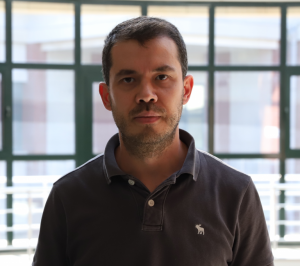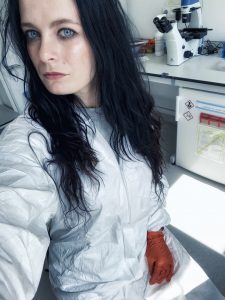Invited speakers
 Tobias Pröll
Tobias Pröll
Professor
Department of Material Sciences and Process Engineering
University of Natural Resources and Life Sciences, Vienna
Biography
Tobias Pröll obtained a PhD in Mechanical Engineering from the Vienna University of Technology (TU Wien) in 2004 and a venia docendi in Chemical and Energy Engineering at the Faculty of Technical Chemistry of TU Wien in 2012 where he was responsible for the Research Group Zero Emission Technologies. Since January 2013 he is full professor for Energy Technology and Energy Management at the University of Natural Resources and Life Sciences, Vienna (BOKU). Ongoing research focuses on thermal fuel processing, fluidized bed systems, emerging CO2 capture technologies, and energy efficiency increase in buildings and industry by heat integration and active waste heat utilization using heat pump systems. Tobias is experienced in process modelling and design and in fluidized bed system design and operation. He takes part in the IEAGHG Network on High Temperature Solids Looping Cycles and is also involved in IEA-IETS in a Subtask on Circular Carbon and Industrial Symbiosis.
Abstract
The climate change mitigation challenge – difficulties and options
Climate change mitigation is surely one of the most pressing challenges today. We can easily identify our societies’ need for energy and the overwhelming dependence on fossil fuels as the source of short-term climate change. But what to do against it? And why it seems comparably difficult to act here opposed to promising experiences with other ecological challenges such as acid rain mitigation or stratospheric ozone preservation? We jointly look at current energy supply figures on a global scale and to technological options we have for efficiency increase and decarbonized energy supply, including negative emission technologies that will be needed to reach the 1.5 degree target mentioned in the COP15 Paris Agreement. We find that extended policies may be necessary for achieving the required transition to avoid catastrophic scenarios with respect to climate change within our century.
 Altan Ozkan
Altan Ozkan
Assistant Professor
Izmir Institute of Technology, Turkey
Biography
Altan Ozkan is an assistant professor in Environmental Engineering Department at Izmir Institute of Technology, Turkey. He received his doctorate in Environmental Engineering at the University of Texas at Austin in 2012. Following his Ph.D. studies, he worked as a postdoctoral scholar in Chemical Engineering Department at Oregon State University. Dr. Ozkan received his Bachelor of Science degree in Environmental Engineering at Middle East Technical University, Turkey, in 2006 and his Master of Science degree in the same field at Hamburg University of Technology, Germany, in 2008. His research interests and expertise focus on the production of value-added chemicals using photosynthetic microorganisms (algae). His research goal is to improve the economic viability and the environmental sustainability of algae based production by developing novel methods and technologies. He has received research funding from industrial and governmental sources both in the U.S. and in Turkey. He has been the recipient of a number of grants and awards including Career Integration Grant and Career Award of the Scientific and Technological Research Council of Turkey as well as Outstanding Academic Performance Award funded by Hanseatic City of Hamburg. He also serves as the reviewer of national and international research funding agencies.
Abstract
Production of Diatom Based High Quality Chitin Nanofibers
Diatoms are a major group of photosynthetic microorganisms (microalgae) that can achieve biomass and metabolite productivities much higher than those of terrestrial plants without the requirement of strategically important resources such as freshwater or arable land. One unique attribute of diatom species under the genera of Cyclotella and Thalassiosira compared to other algal or even to all the other known species is their ability to biosynthesize and extrude commercially valuable chitin nanofibers. Diatoms are the only source of pure chitin in nature and owing to this attribute they are commercially produced for niche biomedical applications.
Chitin is a biopolymer with a variety of industrial applications creating a current market of 9 billion USD and an expected future market of 26 billion USD by 2025. Waste shellfish as a source dominates the current market. However, shellfish-based chitin has two major issues for industrial applications: impurity and inconsistent biopolymer properties. These problems stem from (i) presence of chitin embedded in a complex network of organics and inorganics in shellfish, (ii) harsh chemical conditions that the chitin gets exposed to during harvesting and purification processes, and (iii) presence of various species of shellfish in stock material and their growth under uncontrolled conditions. Thus, industries demanding high quality chitin have long been hindered by the absence of a reliable source.
Diatoms have enormous potential to supply this unsatisfied market demand since they can be cultivated under controlled conditions and reliably produce the highest purity chitin of consistent biopolymer properties. However, diatom chitin is still an untapped source due to lack of understanding on chitin synthesis and the associated biopolymer properties, and an integrated production platform custom fit for this bioproduct of unique properties. One of the main career goals of the speaker is to address all these challenges.
 Paulina Katarzyna Walencik
Paulina Katarzyna Walencik
Post-doctoral researcher
Institute of Agricultural and Food Biotechnology, Poland
Biography
Paulina K. Walencik pursued her studies in chemistry at the University of Wroclaw and received her Ph.D. in 2019. Her research included the physicochemical characterization of redox-active systems containing Cu(I) or Cu(II) ions. She has a background in physical inorganic chemistry, electrochemistry, and the synthesis of sequence-defined systems like peptides and oligocarbamates. In 2022 she joined the Prof. Waclaw Dabrowski Institute of Agricultural and Food Biotechnology State Research Institute as a post-doctoral researcher and currently, she is exploring the topic of antioxidant activity of the plant-based phytochemicals.
Abstract
Copper-based redox mediators – from the living matter to the man-made materials
Redox reactions are a foundation of metabolism in all living organisms. Cellular respiration, DNA transcription, proliferation, or apoptosis, these are just a few of many cellular events regulated by electrons. In nature redox reactions are promoted by systems called “redox mediators”, which ensure the transfer of a charge by working either as electron donors or acceptors. That property is essential especially when cells need to react quickly against external stimuli and generate a fast metabolic response. Nature is using mostly two transition metals, copper and iron, to create cellular redox mediators. And especially copper triggers our scientific curiosity since depending on the number, nature, and type of coordinated donors it may provide either intensified or silenced redox activity.
The most widespread Cu-based redox mediators are blue proteins involved in the cellular photosystem and respiratory chain. Among these macromolecules transfer of a charge provokes changes within electron density and orbitals configuration causing eventually variations in angles and lengths of chemical bonds. In natural systems, these variations have been minimalized to provide optimal conditions for smooth redox reaction.
Structural and functional perfection of biological redox mediators can be used to create a new generation of materials. And together with my coworkers, we have decided to make our contribution to that field by proposing an investigation on Cu-dependent complexes. By working at the interface of coordination chemistry and electrochemistry we have attained all pieces of a puzzle that will provide us with the basis, rules, and limitations of synthetic Cu-peptide systems inspired by nature. During my presentation, I would like to demonstrate the most relevant results for artificial Cu-peptide systems and discuss how spontaneous and pH-dependent coordination of peptides regulate the dynamics and effectiveness of redox conversion. Last but not least, I would like to present how these proof-of-principle studies can be transformed further into material science and future investigation.
